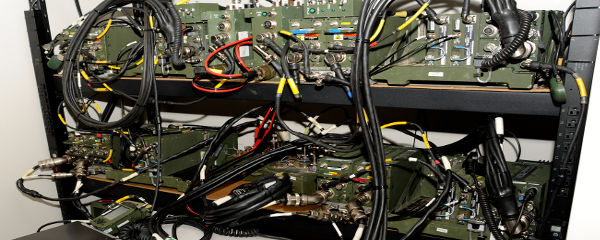What I’ve Learned:
“Prions: Teaching new proteins fold tricks.”
Any neat freak with a hint of OCD can tell you that folding is important. If you two-fold your towels, then a tri-folded one clearly won’t do. If you’re a T-shirt sleeve tucker-underer, then a sideways-folded-over one is just going to make you twitch. And don’t even get me started on socks. I’m pretty sure the Crimean War was started over the improper folding of a pair of tube socks. You can look it up.
What most people don’t realize, though, is that folding is pretty important in other areas, too. Take protein folding, for instance. It’s easy to take protein folding for granted. You probably figure if one of your cells managed to make a protein properly — without any mutations in the gene, or DNA transcription errors, or messenger RNA misreads, or a thousand other pitfalls that can hork a protein entirely — then the hard part is over. But no. That protein still has to fold itself properly, like some tiny automated scrap of origami, to be of any use.
And what happens when the protein doesn’t fold the right way, and helix B wraps around sheet C, instead of sheet A like it’s supposed to? If it’s a specific type of protein found in humans, other mammals, some fungi and possibly elsewhere, then it becomes something called a prion. And that’s very bad.
(Worse than a pair of khakis folded away from the crease? Ay, chihuahua!)
The “common” (or “cellular”) version of the potential-prion protein is found throughout the bodies of humans and animals, in many different kinds of cells. This version is folded correctly, is anchored to the outer membranes of cells, and is thought to be involved in interactions between cells, including intercellular communication like signals passing through neurons in the brain. And as long as it’s pretzeled up the way it should be, there aren’t any problems.
But under certain conditions, this protein doesn’t fold quite right, and that leads to a snowballing set of problems. First, the misfolded prion can interact with “good” versions of the protein, and rejigger them in its image — namely, as bent-out-of-shape kinked-up beasts, ready to wreak havoc all around. Think of the self-replicating Smiths from those Matrix movies that weren’t as good as the first one, only with a hunchback or double-jointed knees or something.
The bigger problem is that these refolded prions can then link together in chains called fibrils, gradually forming huge structures called amyloid aggregates. These aggregates grow larger and larger, until they eventually disrupt cells and tissues — often in the brain. I’m no fancy neuroscientator person, but even I know that having an ever-growing Lego set inside your skull is probably not a good thing.
In fact, it’s an incredibly bad thing. Active prions lead to diseases known as spongiform encephalopathies, where “encephalopathies” means “brain diseases” and “spongiform” means “looking like a sponge”. Brain sponge disease. So the term isn’t as complicated as it sounds — but it’s several million times more frightening.
In sheep, prions cause a nasty-sounding disease called scrapie, and in cows, bovine spongiform encephalopathy, better known as mad cow disease. Humans get the misleadingly innocuously-named kuru, and then some diseases named more appropriately for a horror that turns your brain to Swiss cheese: Creutzfeldt-Jakob disease and Gerstmass-Straussler-Scheinker syndrome, for two.
Sadly, prion diseases are currently untreatable, and universally fatal. On the bright side, if you can manage not to eat the diseased brain of a sheep, cow or sworn enemy that has the disease, you’re pretty unlikely to get it yourself. But just to be safe, whether it’s laundry or proteins — pay attention to your folding. You can’t be too careful.



